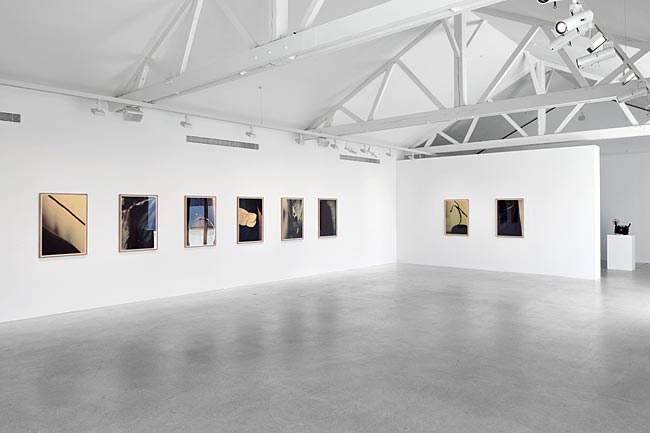 |
| Amos Gitaï, Army Day Horizontal, Army Day Vertical, 2014 |
This Spring is Amos Gitaï season in Paris. His work is
enjoying multiple exhibitions at multiple sites around the city in a tribute to
his long career in multi-media. I saw this exhibition of a series of works at
Galerie Thaddaeus Ropac’s Pantin space last week, and was charmed, fascinated
and challenged. I am used to Gitaï’s work being challenging and conceptually
rich, but not always so aesthetically appealing. The super-8 films and blown up
stills from the films have that grainy texture that belongs only to images made
and screened the old-fashioned way.
 |
| Amos Gitaï, Army Day Horizontal, Army Day Vertical, 2014 |
Army Day Horizontal.
Army Day Vertical shows two super-8 films, Before & After and Black
& White (1972) along
with a series of still photographs, previously unseen. Before & After is
an experimental film shot in 1973 during the Yom Kippur war. In the film Gitaï revisits an event that occurred when he was only 23 years old, namely a
helicopter crash from which he miraculously escaped with his life. The accident
led to a lifetime of making films. This super-8 features the military jacket Gitaï was wearing at the time of the accident; and it becomes the central
'character' of the film. The still images frame particularly haunting moments
within the film: the hook of the hanger on which the coat is hung, the landscape
seen from the plane, Gitaï’s young face in closeup.
 |
| Amos Gitaï, Army Day Horizontal, Army Day Vertical, 2014 |
A quote on the wall as we enter the space tells us
everything we need to know in order to understand and to be touched by the films
and photographs on exhibition. This is, like much of Gitaï’s work, a search for
how to represent memory. He asks in the quotation, does memory have a
geography? A landscape? Does it work by association? Can it be determined by
the senses? What is its chronology? How can temporality be made visual? How are
souvenirs (memories) turned into la mémoire (memory). And so, within the
gallery space, I found myself searching for memory. I found it caught in the
grain of the image, in the colour, the close up, and also in the content of the
images. Memory is in the threads of the fabric of the jacket, the way it hangs
from a hook, the way a coathanger hooks onto a string and blows in the wind,
even if it is perfectly still. Memory is located in the air within these
photographs.
 |
| Installation View |
On still another level, memory is in the use of a super-8
camera, a technology that speaks a certain time, a very specific production of
the past, a home movie. Gitaï is a master of time, exposing the time between
then and now, past and present. And this is what he does best in these images:
he makes time visible through drawing on conventions and technologies that are
of another time.
 |
| Amos Gitaï, Army Day Horizontal, Army Day Vertical, 2014 |
Perhaps the most striking (and impressive) element of Gitaï's memories are that they are, at one and the same time, personal and intimate,
private and deeply individual, but always, they are the memories of nations, of
his people. Gitaï is helped in this trafficking between private and public by
the fact that he is Israeli and has a father who was a student at the Bauhaus
in Dessau before Hitler came to power. Not all of us have the profundity of a
nation’s history in the palm of our hand, in our bloodlines. Nevertheless,
Gitaï does what we all could do, but don’t: he takes the world around him and makes
it produce meanings that reverberate way beyond its everyday life. There’s
something very extraordinary about works that use the most ordinary of things
and images to reflect on, and give insight into the most devastating world
events in their midst.
All Images Copyright the artist/Galerie Thaddaeus Ropac
No comments:
Post a Comment